Santuario de la Realeza Jongmyo (종묘) [Patrimonio Cultural de la Humanidad de la Unesco]
1.5Km 2023-08-28
Jong-ro 157, Jongno-gu, Seúl.
El Santuario de la Realeza Jongmyo era el lugar de adoración de los reyes de la dinastía Joseon. Fue construido cuando el primer rey de Joseon, Lee Seong-Gye (1335-1408) fundó la dinastía. El Santuario de la Realeza Jongmyo se encuentra registrado como Patrimonio Cultural de la Humanidad porque la tradición y las costumbres tales como los servicios de conmemoración y la música tradicional entre otros, se hallan muy bien preservados.
Frente a la entrada principal del Santuario el sendero se divide en tres. La senda del medio, levemente más elevada que los de los lados, era para el difunto rey; la senda del lado este, para el rey en el gobierno; y la del lado oeste, para el príncipe. El sendero central se conecta a Jeongjeon, y los senderos de los lados, a las habitaciones donde se preparaban para el servicio de conmemoración una vez que habían consumado la ablución. Después de la preparación adecuada del cuerpo y mente, el rey y el príncipe se trasladaban a Jeonsacheong. Jeonsacheong era el lugar donde se preparaba la comida para la ceremonia. Con un patio en el centro, el edificio de Jeonsacheong tenía la forma de un cuadrado. El edificio principal, Jeongjeon era donde se preservaban las lápidas mortuorias de los reyes anteriores y la sede de ejecución de las ceremonias de conmemoración. Solamente este lugar ha mantenido durante tan largo tiempo su tradición, pese a que la costumbre de celebrar la memoria de los monarcas exitosos se haya trasmitido originalmente desde China. Jeongjeon tiene 19 habitáculos y en cada uno se adora a los reyes de la Joseon. Dentro de una pared de Jeongjeon se halla el Gongsinjeong, donde se preservan los restos de los servidores más fieles al rey.
La música de los servicios conmemorativos del Santuario de la Realeza Jongmyo es el resultado armónico de los sonidos instrumentales, el canto, y las danzas que se han transmitido por 500 años. La melodía se logra en la misma forma que hace cinco siglos atrás. Entre las ceremonias completas, esta es la más antigua del mundo y tiene lugar cada primer domingo de mayo. Si está de viaje por Corea en esas fechas, puede ser una excelente oportunidad para observar la solemnidad y grandeza de una ceremonia tradicional tan antigua.
GAMMEEOK (감미옥)
1.5Km 2021-03-18
166-1, Jong-ro, Jongno-gu, Seoul
+82-2-2269-6933
A restaurant specializing in seolleongtang (ox bone soup) for over 30 years now. The best menu at this restaurant is ox bone soup. This is a Korean cuisine located in Jongno-gu, Seoul.
Museo de las Joyas del Mundo (세계장신구박물관)
1.5Km 2023-10-13
Bukchon-ro 5-nagil 2, Jongno-gu, Seúl
Este museo se encuentra ubicado en la Calle Cultural de Samcheong-dong. Lee Gang-won, titular del museo, es poeta y ensayista. Durante 30 años ha recorrido 60 países y ha coleccionado alrededor de 3.000 joyas, de las cuales el museo exhibe, aproximadamente, un millar. No se tratan de joyas famosas y de alto costo, sino aquellas que poseen un valor especial por su historia.
El primer piso del museo está dividido en las siguientes salas: Sala del Ámbar, que muestra la textura de las eras antiguas del planeta; la Sala del Oro, que enloqueció a los europeos en el siglo XVI; la Sala de los Collares, decorados artísticamente; y la Sala de la Cruz. En el segundo piso, se encontrará con máscaras, anillos, etc., y las impresionantes salas del Marfil y Abalorios y de Joyas Modernas, entre otras.
Seochon Guest House [Korea Quality] / 서촌 게스트하우스 [한국관광 품질인증]
1.5Km 2023-04-07
28-3, Jahamun-ro 7-gil, Jongno-gu, Seoul
+82-010-3345-9680
Seochon Guest House is located in Seochon, which is becoming a hot place for tourists in Seoul, and precisely on the road to Suseong Valley, whichis filled with interesting stores and is also well-known for Park Nosoo Art Gallery and the House of Yun Dong-ju (poet). Seochon Guest House is nicknamed ‘Jaeminangol (interesting village)’ after Baekseok’s poem ‘Yeowunangol’, with the aim of providing a visit full of interesting experiences. Passing through a garden and entering the main building, the unique charm of this hanok building, the staircase to get to the first floor from daecheong (main floored room), catches the eye of the visitors. In addition, the building is decorated with various stylish objects including paintings and Korean musical instruments. The terrace situated on the first floor offers an open view of the surrounding area including roof tiles of hanok structures and alleyways in Seochon. It is said that Korean novelist Yoon Hu-myeong also appreciated the structure of the guesthouse, saying, “It is an interesting place.” Built in the 1930s, the house, which has many storage places, was taken by the owner couple in spring 2014 as they were attracted by the house during their trip to Seochon. After the repair work, the ground floor of the house was opened for guests from January 2016, hoping that guests could share their daily experiences and stories with each other. The guestrooms and the main floored room on the ground floor are open to guests, with the exception of the first floor, which is used by the owner couple. The living room is equipped with books, a curved TV, and a table. The tasty meal, which is served in the kitchen, consists of rice and soup with six side dishes and is much loved by guests. The guesthouse offers a total of four rooms – Jae Room, which is the most Korean-style room; Mi Room, which has a combined style of a Korean-style room and Western-style room; Nan Room, which is an ideal room for meditation with a beautiful paper window; and Ahn Room, which is equipped with a veranda and a pretty flowerbed. Every room has its separate charm with various comfortable bedding to provide a quiet and cozy bedroom for guests in the middle of the city. Furthermore, the guesthouse holds a pansori (epic chant) performance twice a year. The owner started learning how to sing pansori to promote the Korean culture and tradition to foreigners. When a pansori performance is held, the owner offers traditional Korean snacks and drinks including sikhye (sweet rice punch), sujeonggwa (cinnamon punch), traditional sweets and cookies, and tteok (rice cakes) to visitors, tourists, and performers. Moreover, it provides cultural programs such as a Gukak (Korean classical music) experience, Korean traditional clothes experience, and making Korean food experience, as well as other activities with guests, such as trip to the city wall between Inwangsan Mountain and Bugaksan Mountain, and the Royal Palace Tour to Gyeongbokgung Palace, etc., as well as a trip to a traditional market.
Gyerim Maneuldak (계림마늘닭)
1.5Km 2021-03-19
43, Chungmu-ro, 2-gil, Jung-gu, Seoul
+82-2-6467-6962
This Korean cuisine is located near Chungmuro Station, Seoul. A restaurant selling spicy chicken soup. The representative menu is spicy braised chicken.
Monte Inwangsan (인왕산)
1.5Km 2022-05-13
Inwangsan-ro 1-gil 29, Jongno-gu, Seúl
En el monte Inwangsan pueden encontrarse la zona de los rituales del rey Taejo y Muhakdaesa y la muralla fortificada construida para delimitar Seúl, que une el Túnel Sajik con Jahamun. Muchas personas disfrutan de la ruta de senderismo que comienza en el Túnel Sajik y avanza hacia el pico de la montaña, para después caminar al lado de la muralla y llegar a Buam-dong. Esta ruta de senderismo también está conectada con la carretera situada ante Cheong Wa Dae, por lo que los excursionistas pueden ver lugares históricos como el camino Palpan, el camino Hyoja, y el palacio Gyeongbokgung. La ruta de senderismo que transcurre por detrás del Parque Sajik se dirige a Hwanghakjeong, donde los arqueros de la dinastía Joseon demostraban su destreza. Hwanghakjeong estaba originalmente ubicado en el palacio Gyeongbokgung, pero fue trasladado a la montaña. Desde la cumbre puede disfrutarse de una vista panorámica de los alrededores, con el palacio Gyeongbokgung en el centro, que se extiende hasta los montes Naksan, Namsan y Baegaksan.
La ruta que bordea la muralla es popular entre montañistas que buscan disfrutar del bonito paisaje. Al seguir el sendero dentro de la muralla, aparecerán una serie de peldaños de piedra al pasar Changuimun. Tras subir estos peldaños, el sendero se bifurca hacia la parte exterior de la muralla. El sendero se alarga por 200 metros, hasta unas rocas que fueron usadas para construir castillos en tiempos de los reyes Taejo, Sejong y Sukjong. El oscuro musgo de estas rocas indica la larga historia de Seúl. El sendero también lleva al castillo Tangchundae, construido para fortalecer las defensas de la capital tras la invasión japonesa de 1592 y las incursiones manchúes de 1636.
El monte Inwangsan se erige hasta los 338 metros de altitud, cubriendo Honghe-dong, de Seodaemun-gu, y Muak-dong, Nusang-dong, Ogin-dong y Buam-dong de Jongno-gu. Las colosales formaciones rocosas y vistas de Seúl y de Cheong Wa Dae son algunos de los grandes encantos de esta montaña.
Rakkojae Seoul Bukchon Hanok Hotel [Korea Qaulity] / 락고재 서울 북촌 한옥호텔 [한국관광 품질인증/Korea Quality]
1.5Km 2021-10-27
49-23, Gyedong-gil, Jongno-gu, Seoul
The main building in Seoul is a traditional Korean cultural space renovated by Jeong Yeong-jin, a human cultural asset, from a hanok with a history of 130 years. Traditional flags, fences, pavilions, chimneys, and jangdokdae are holding the blue sky with pine trees, creating a harmonious Korean-style house. Passing through the elegant tall gate, as you see the jangdokdae, a small but clean hanok will be revealed, and the pine trees and bamboo trees added to the natural beauty, while the loving Gomusin placed on the stone brings back beautiful memories.
Rakkojae is a place where the customs of the aristocrats in the past are melted in various places, creating a wonderful atmosphere by carefully reviving the pavilion, ponds, and daecheongmaru. Especially, Daecheongmaru adds the beauty of the margins of hanok to give you a sense of refreshment. As the old scholars did, sitting on the pavilion makes the time flow slow and the wind that passes over the Sotdae feels special.
In addition, you can experience the beauty of Korean tradition with various programs such as tea ceremony, jjimjilbang, royal robes, and kimchi-making along with traditional Korean food. Rakkojae's accommodation, reminiscent of a nobleman's house in the Joseon Dynasty, is well-kept and comfortable that it is comparable to a luxury hotel, and the natural jade-covered ondol rooms and firewood jjimjilbangs made of cheongito provide a healthy journey for many guests.
The Place Seoul (traditional Korean-style guesthouse) [Korea Quality] / 멀티스페이스 곳 [한국관광 품질인증]
1.5Km 2019-12-05
52-11, Gyedong-gil, Jongno-gu, Seoul
+82-10-3255-1289
“The Place Seoul” is located in a small alley in Gyedong-gil, Jongno-gu, Seoul. It is a guesthouse made by remodeling an 80-year-old traditional Korean house. The ondol room furnished with traditional beddings is popular not only among foreigners but also among Koreans due to its special ambience. The ceiling of the room dates back to 80 years ago. The rafter put on the roof at the time of construction of the house shows the antiqueness of the house. The toenmaru (a narrow wooden porch running along the outside of a room) that comes alive with the frequent coming and going of people adds to the ambience of the traditional Korean house, with the Sansuyu (corni) tree and vegetable garden beside the Korean-style house creating a leisurely atmosphere.
Beyond being a mere place to sleep in, “The Place Seoul” aims to be a composite cultural space whose motto is “the place to fill.” A simple wedding or a small-scale performance is held in the garden during the day. The rooms can be rented for small meetings.
“The Place Seoul” sponsors “WWOOF KOREA,” an NGO promoting environment-friendly agriculture as well as the right dietary life, “Slow Food Korea,” and “Slow Box.” As such, the place serves a special healthy breakfast consisting of homemade bread, handmade yogurt, and organic fruits and vegetables. In addition, the toilet paper, detergent, shampoo, etc. provided are all environment-friendly products.
“The Place Seoul” is located on Gyedong-gil Road, a famous tourist attraction in Seoul. It offers easy access to Bukchon Hanok Village, which is on the other side of the Gyedong-gil alley, as well as other major tourist attractions within walking distance including Changdeokgung Palace, Gyeongbokgung Palace, Samcheong-dong, and Insa-dong. The convenient location of “The Place Seoul” makes it easy to tour downtown Seoul.
Baengnyeon Tojong Samgyetang (백년토종삼계탕)
1.5Km 2021-03-24
41, Bukchon-ro, Jongno-gu, Seoul
+82-2-747-5535
This is the place featured on the Michelin Guide. This Korean dishes restaurant is located in Jongno-gu, Seoul. The representative menu is ginseng chicken soup.
Luden Loquen SPACE (카페LN)
1.5Km 2019-11-26
5, Bukchon-ro 5na-gil, Jongno-gu, Seoul
+82-2-722-7597
Luden Loquen SPACE is a unique hanok cafe, located at the end of the alley where Bukchon Hanok Village starts. The cafe is not just an average café where you can drink tea or coffee but because of location and design it has an added sense of cultural value. Locals come to enjoy the best tea in town, brewed using high quality tea leaves with information on its origin attached. In addition to traditional drinks and sweets, the coffee shop offers a variety treats that combines Korean ingredients and modern desserts. The hanok building has been reinterpreted through a modern design.
![Santuario de la Realeza Jongmyo (종묘) [Patrimonio Cultural de la Humanidad de la Unesco]](http://tong.visitkorea.or.kr/cms/resource/41/2678541_image2_1.jpg)
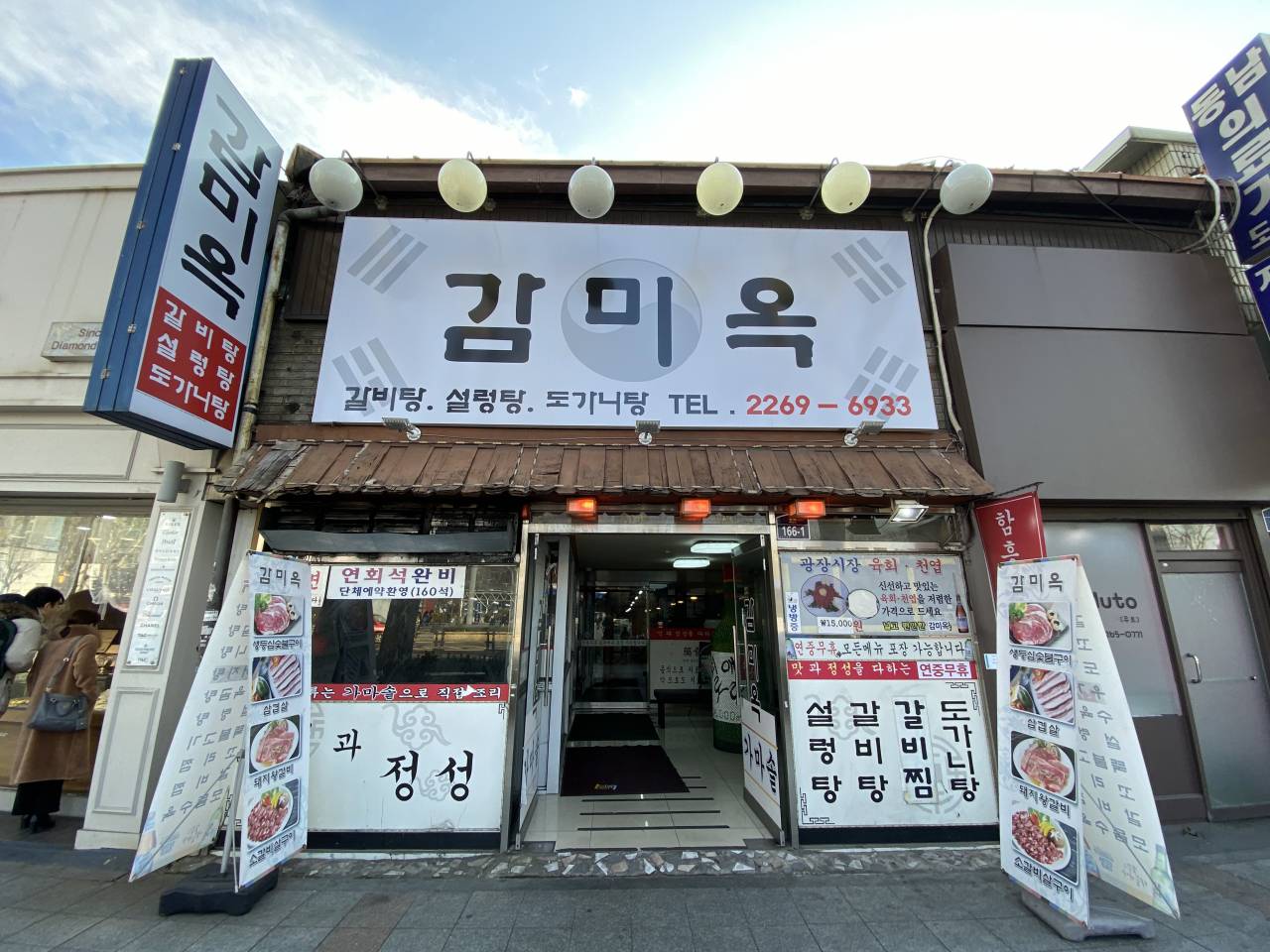
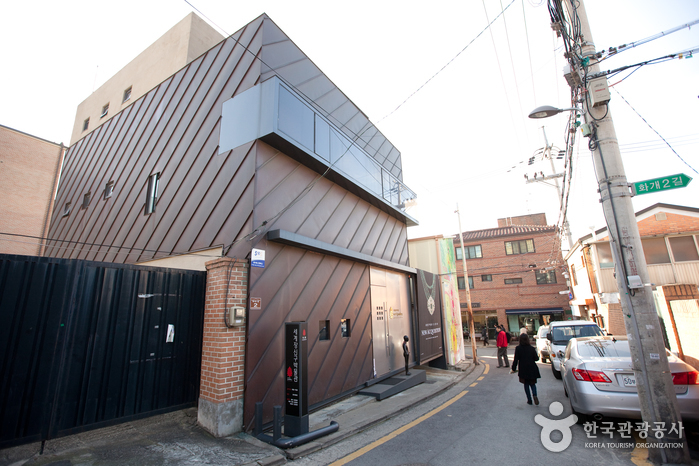
![Seochon Guest House [Korea Quality] / 서촌 게스트하우스 [한국관광 품질인증]](http://tong.visitkorea.or.kr/cms/resource/41/2447241_image2_1.jpg)
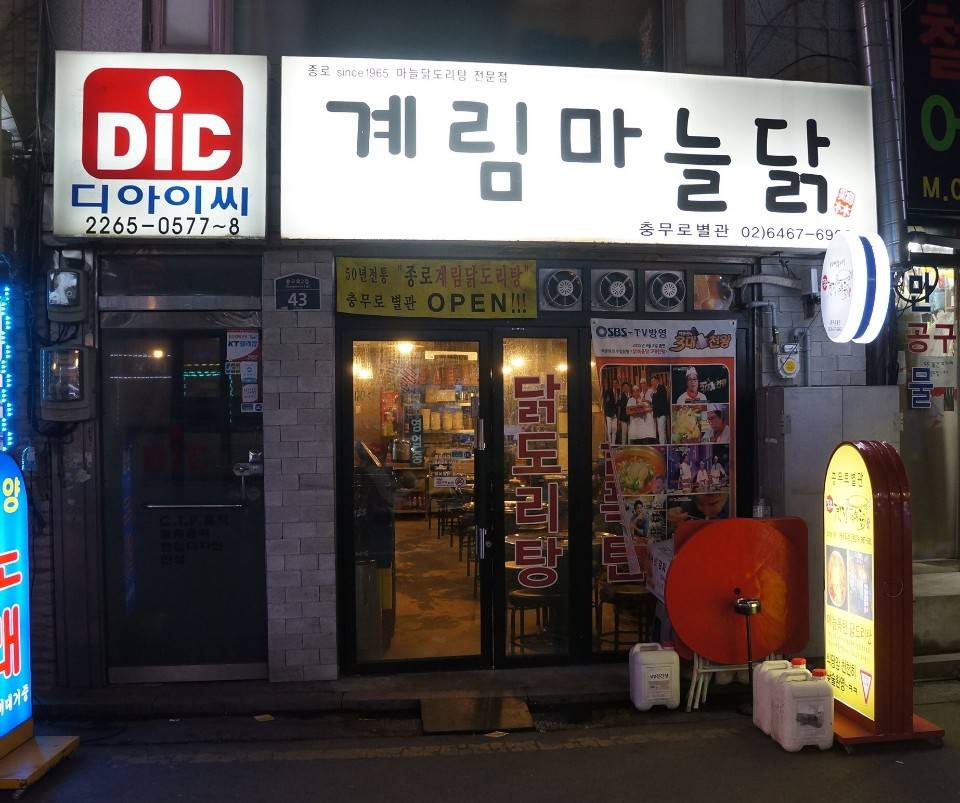
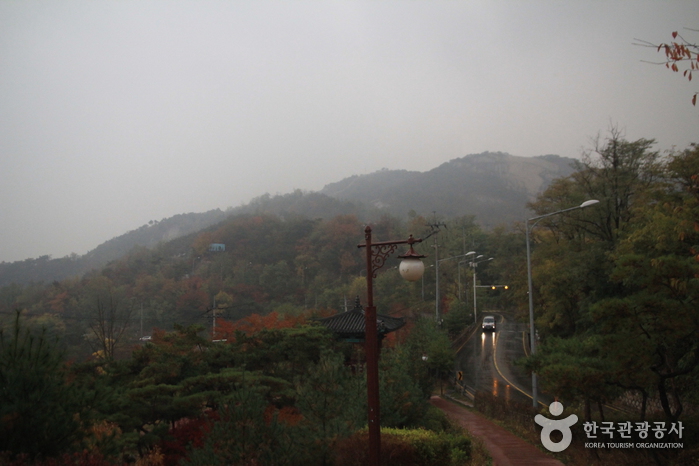
![Rakkojae Seoul Bukchon Hanok Hotel [Korea Qaulity] / 락고재 서울 북촌 한옥호텔 [한국관광 품질인증/Korea Quality]](http://tong.visitkorea.or.kr/cms/resource/40/2698240_image2_1.jpg)
![The Place Seoul (traditional Korean-style guesthouse) [Korea Quality] / 멀티스페이스 곳 [한국관광 품질인증]](http://tong.visitkorea.or.kr/cms/resource/68/2631068_image2_1.jpg)
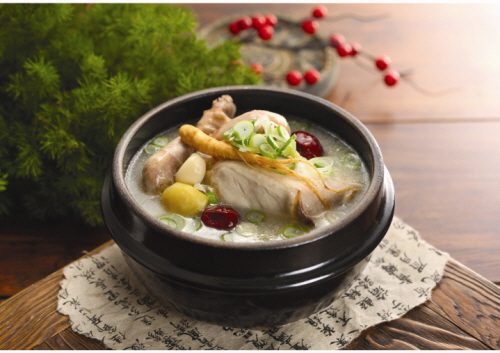

 Español
Español
 한국어
한국어 English
English 日本語
日本語 中文(简体)
中文(简体) Deutsch
Deutsch Français
Français Русский
Русский